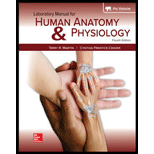
Concept explainers
The type of
a. catabolism
b. anabolism
c. synthesis
d. active transport
Introduction:
The living organisms are considered living because there are many non-living processes being carried out in the body to make the body living. The vital processes that occur in our body are on a mission to maintain homeostasis in the body. Homeostasis is the equilibrium of the body between interdependent elements.
Answer to Problem 1PL
Correct answer:
The correct answer is option (a) catabolism.
Explanation of Solution
Explanation/justification for the correct answer:
Option (a) catabolism. Catabolism is the breakdown reactions in which biomolecules are broken down into their simpler forms along with the release of energy. Catabolic reactions are also called as destructive metabolism. So, the correct answer is option (a).
Explanation for incorrect answer:
Option (b) anabolism. Anabolism is the opposite of catabolism in which large biomolecules are formed from their simpler precursors along with the storage of energy. They are also known as constructive metabolism. So, this is an incorrect option.
Option (c) synthesis. Energy is released during breakdown while energy is stored during synthesis. So, this is an incorrect answer.
Option (d) active transport. Active transport is a mechanism of transport of molecules from one place to another in the cell. It is not involved in synthesis or breakdown. Although during active transport, energy is required, it is not a metabolic reaction.
Want to see more full solutions like this?
Chapter 56 Solutions
Laboratory Manual For Human Anatomy & Physiology
- Which of the following is not true about enzymes? a. They are consumed by the reactions they catalyze. b. They are usually made of amino acids. c. They lower the activation energy of chemical reactions. d. Each one is specific to the particular substrate(s) to which it binds.arrow_forwardWhich molecule does not form during glycolysis? a. NADH c. oxygen (O2) b. pyruvate d. ATParrow_forwardSubstance A is converted to substance B in a metabolic reaction. Which statement best describes the role of enzyme during this reaction? A. It dissolves substance A in the reaction medium. B. It speeds up the reaction without it being consumed in the process. C. It provides energy to the reaction system D. It adjusts the pH of the reaction medium.arrow_forward
- What is the definition of a catabolic metabolic pathway? A. A pathway that releases energy and releases matter B. A pathway that stores energy and releases matter C. A pathway that releases energy and stores matter D. A pathway that stores energy and stores matterarrow_forwardCyanide makes a bond to cytochrome in the electron transport chain located in the mitochondria, rendering the electron transport chain useless. The cyanide ingestion in death due to which of the following? a) Starvation, due to an inability to create glucose.b) Build up of lactic acid.c) Inability to take in oxygen through the lungs.d) Cellular death from lack of energy.arrow_forwardWhich statement about the ATP synthase is false? a. It is a rotary machine b. It is located in the inner mitochondrial membrane c. It can make ATP, or it can break ATP down d. It only contains membrane-embedded regionsarrow_forward
- The metabolic process that produces the most ATP molecules isa. glycolysis.b. the citric acid cycle.c. the electron transport chain.d. fermentation.arrow_forwardWhat is the difference between cellular respiration and fermentation? Select an answer. a) cellular respiration does not need oxygen, while fermentation needs oxygen b) cellular respiration needs oxygen, while fermentation does not need oxygen c) cellular respiration produces very little energy, while fermentation produces a lot of energy d) Almost all cells carry out fermentation, while few carry out cellular respirationarrow_forwardWhich is established by the electron transport chain and can be used to drive cellular work especially by the ATP synthase? a. Kinetic Energy b. Electrical Energy c. Gravitational Force d. Proton-Motive Forcearrow_forward
- Which About Metabolism Is True A) Spontaneous Reactions Require Enzymes B)Non-Spontaneous Reactions Will Never Occur C)Endergonic Reactions Are Spontaneuos D)Catabollic Reactions Conume Energy To Build A Moleculearrow_forwardWhich of the following choices BEST describes metabolism? a. breakdown of biomolecules b. controlled by enzymes and involved ATP c. all of the choices are correct d. synthesis of biomoleculesarrow_forwardEnzymes catalyze a chemical reaction by A. decreasing the amount of ATP required to activate a reaction B. increasing the amount of ATP required to activate a reaction C. slowing down the reaction to obtain more products D. increasing the reaction to obtain more products E. decreasing the amount of ATP required and obtaining more products.arrow_forward

 Concepts of BiologyBiologyISBN:9781938168116Author:Samantha Fowler, Rebecca Roush, James WisePublisher:OpenStax College
Concepts of BiologyBiologyISBN:9781938168116Author:Samantha Fowler, Rebecca Roush, James WisePublisher:OpenStax College Biology (MindTap Course List)BiologyISBN:9781337392938Author:Eldra Solomon, Charles Martin, Diana W. Martin, Linda R. BergPublisher:Cengage Learning
Biology (MindTap Course List)BiologyISBN:9781337392938Author:Eldra Solomon, Charles Martin, Diana W. Martin, Linda R. BergPublisher:Cengage Learning




